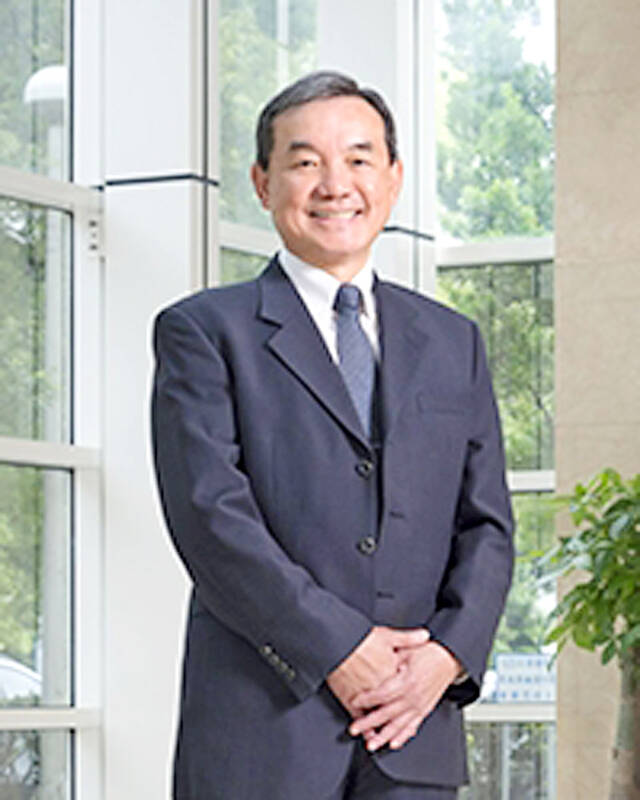Vanguard International Semiconductor Corp (世界先進) yesterday said it would push back its new capacity expansion plan by about two quarters as some customers are still burdened by inventories amid sluggish demand for power management chips used in handsets, servers and computers.
The Hsinchu-based contract chipmaker now expects overall capacity this year to grow about 6 or 7 percent, from its previous estimate of an 8 percent increase.
Vanguard said its Singaporean facility — Fab 5 — would be affected the most. The chipmaker originally planned to boost the fab’s monthly capacity to 15,000 8-inch equivalent wafers next quarter from the current 11,000 wafers. The expansion has been postponed to early next year.

Photo: Screen grab from Web site of Vanguard International Semiconductor Corp
Vanguard employs a different business model for Fab 5, with most customers signing long-term supply agreements and making prepayments to secure capacity at agreed prices and volume.
“In response to the semiconductor industry’s severe inventory correction due to macroeconomic factors, such as high inflation, interest rate hikes, war and geopolitical tensions, Vanguard will expand its capacity in a cautious and conservative manner,” company president John Wei (尉濟時) told an online investors’ conference yesterday.
“Some customers have increased demand for Vanguard’s wafers this quarter. However, demand from some other customers remain sluggish as they are still digesting inventory,” Wei said.
Order visibility is short at about three months, Wei said.
Overall, factory utilization this quarter is forecast to climb about 4 percentage points to 62 or 63 percent from 57 or 58 percent last quarter.
With improving demand from some customers for driver ICs used in TVs and smaller-sized panels, revenue this quarter is expected to increase between 15 percent and 19.66 percent to between NT$9.4 billion and NT$9.8 billion (US$305.7 million and US$318.7 million), compared with NT$8.19 billion in the first quarter.
Power management chips were the biggest revenue contributor last quarter, making up 69 percent of the company’s sales.
Driver ICs for large panels came next at 20 percent.
Gross margin this quarter would range between 29 percent and 31 percent, from 30 percent last quarter, as the average selling price is forecast to drop about 5 percent sequentially while manufacturing costs rise due to a 17 percent hike in electricity rates, Vanguard said.
“We expect most customers’ inventory digestion to peak in the second quarter,” Vanguard vice president Claire Chen (陳姿鈞) said, adding that TV and consumer electronics customers have seen a recovery in demand. “We are positive about the second half, but it remains to be seen how fast a recovery would be.”
The chipmaker yesterday reported its weakest quarterly net profit in about five years. After-tax income last quarter sank 66.7 percent year-on-year to NT$1.36 billion, the lowest since the first quarter of 2018. On a quarterly basis, net profit tumbled 25.9 percent from NT$2.48 billion.
Earnings per share dipped to NT$0.82 last quarter from NT$2.47 a year earlier and from NT$1.47 in the final quarter last year.

SEMICONDUCTORS: The firm has already completed one fab, which is to begin mass producing 2-nanomater chips next year, while two others are under construction Taiwan Semiconductor Manufacturing Co (TSMC, 台積電), the world’s largest contract chipmaker, plans to begin construction of its fourth and fifth wafer fabs in Kaohsiung next year, targeting the development of high-end processes. The two facilities — P4 and P5 — are part of TSMC’s production expansion program, which aims to build five fabs in Kaohsiung. TSMC facility division vice president Arthur Chuang (莊子壽) on Thursday said that the five facilities are expected to create 8,000 jobs. To respond to the fast-changing global semiconductor industry and escalating international competition, TSMC said it has to keep growing by expanding its production footprints. The P4 and P5

DOWNFALL: The Singapore-based oil magnate Lim Oon Kuin was accused of hiding US$800 million in losses and leaving 20 banks with substantial liabilities Former tycoon Lim Oon Kuin (林恩強) has been declared bankrupt in Singapore, following the collapse of his oil trading empire. The name of the founder of Hin Leong Trading Pte Ltd (興隆貿易) and his children Lim Huey Ching (林慧清) and Lim Chee Meng (林志朋) were listed as having been issued a bankruptcy order on Dec. 19, the government gazette showed. The younger Lims were directors at the company. Leow Quek Shiong and Seah Roh Lin of BDO Advisory Pte Ltd are the trustees, according to the gazette. At its peak, Hin Leong traded a range of oil products, made lubricants and operated loading

STIMULUS PLANS: An official said that China would increase funding from special treasury bonds and expand another program focused on key strategic sectors China is to sharply increase funding from ultra-long treasury bonds this year to spur business investment and consumer-boosting initiatives, a state planner official told a news conference yesterday, as Beijing cranks up fiscal stimulus to revitalize its faltering economy. Special treasury bonds would be used to fund large-scale equipment upgrades and consumer goods trade-ins, said Yuan Da (袁達), deputy secretary-general of the Chinese National Development and Reform Commission. “The size of ultra-long special government bond funds will be sharply increased this year to intensify and expand the implementation of the two new initiatives,” Yuan said. Under the program launched last year, consumers can

Citigroup Inc and Bank of America Corp said they are leaving a global climate-banking group, becoming the latest Wall Street lenders to exit the coalition in the past month. In a statement, Citigroup said while it remains committed to achieving net zero emissions, it is exiting the Net-Zero Banking Alliance (NZBA). Bank of America said separately on Tuesday that it is also leaving NZBA, adding that it would continue to work with clients on reducing greenhouse gas emissions. The banks’ departure from NZBA follows Goldman Sachs Group Inc and Wells Fargo & Co. The largest US financial institutions are under increasing pressure